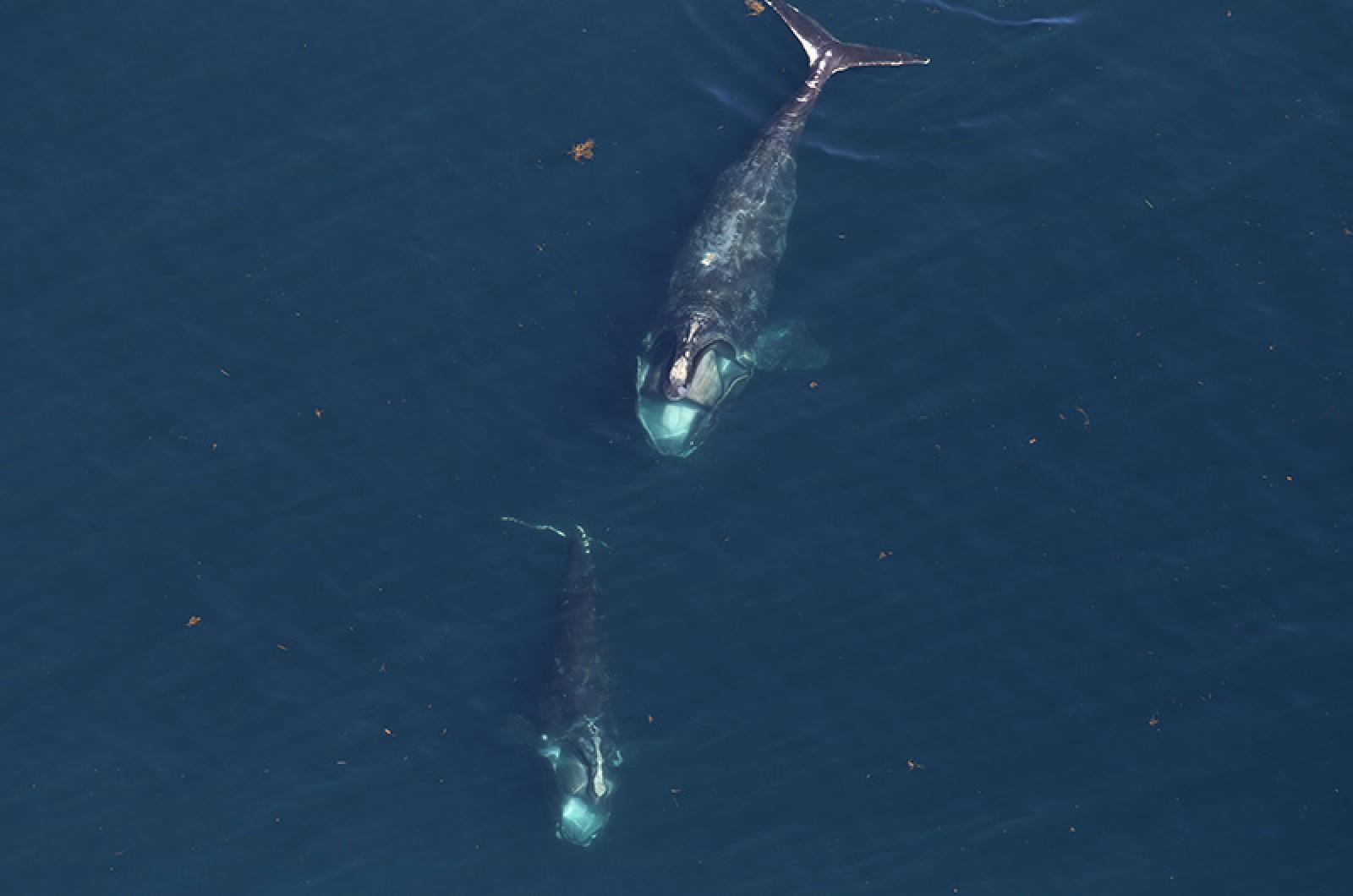The National Oceanic and Atmospheric Administration announced Monday it’s dedicating $82 million to help save the critically endangered North Atlantic right whale.
The money, made available by the Inflation Reduction Act, is a “once-in-a-lifetime opportunity” to address the right whale crisis and their primary threats, NOAA wrote in a statement this week.
The species, which swims through the Island’s waters, is fast disappearing and there are only 350 right whales remaining in the world’s oceans, about 70 of which are actively reproducing females.
The federal agency will invest $35.8 million to better monitor the whales. About $38 million will go towards cutting down what scientists say are two of the biggest threats to the species: ship strikes and entanglements in fishing lines. About $5 million will be spent on enforcement.
The New England Aquarium has been studying ways to save the species and praised the government decision to dedicate the massive amount of money towards the whales.
“This funding can help chart an essential path forward for both the recovery of the critically endangered North Atlantic right whale and continued responsible ocean use,” Sarah Reiter, the aquarium’s director of ocean policy, said.
The species’ population has been declining since 2011. Research shows that, in addition to entanglements and vessel strikes, increasing ocean noise and climate change impact both overall survival and females’ ability to produce calves.
NOAA, tasked with protecting the whales, said it plans to implement new technologies and models to reduce the risks to the whales. It will also use the money to increase the use of “on-demand” fishing gear, an innovative technology that is being explored for the lobster fishery in New England.
New satellite observations could make it easier to track the whales, which often spend long periods underwater.
The aquarium has long-called for better protections, including the introduction of on-demand fishing gear.
“The threat of extinction for North Atlantic right whales means bold actions are needed to ensure this species survives,” said Jessica Redfern, the associate vice president of ocean conservation science in the aquarium’s Anderson Cabot Center for Ocean Life.
The same day NOAA announced the funding it also published a proposed amendment to expand the Massachusetts Restricted Area — an area which includes Cape Cod Bay and much of the water directly east of the Cape and Nantucket where annual restrictions each spring prohibit the use of trap and pot gear with buoy lines.
The proposed area to be added, known as the MRA wedge, falls between Massachusetts state waters and the federal waters of the MRA. NOAA implemented emergency restrictions in the MRA wedge in April 2022 and from February to April in 2023 as part of an effort to reduce mortality and injuries of North Atlantic right whales seen in the area.
The amendment would apply NOAA’s annual MRA restrictions on traps and pots with buoy lines to the MRA wedge.
NOAA will be holding two public hearings about the amendment next week — at its Greater Atlantic Regional Fisheries Office in Gloucester on September 26 and the Massachusetts Maritime Academy in Buzzards Bay on September 28. Both hearings are scheduled to begin at 5 p.m.
Public comments can also be made online through the Federal Register comment portal (federalregister.gov) by searching the amendment.







Comments (2)
Comments
Comment policy »